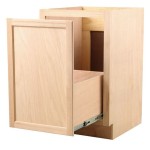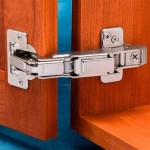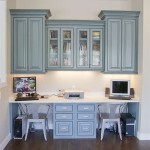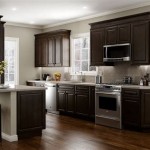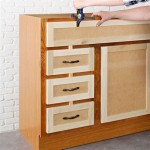The Perfect Dining Room Corner Cabinets: Storage, Style, and Space
Dining room corner cabinets are often overlooked, yet they offer a unique blend of functionality and aesthetic appeal, particularly valuable in optimizing smaller or unusually shaped dining spaces. Selecting the right corner cabinet involves careful consideration of various factors, including the available space, intended use, desired style, and budget. The goal is to find a piece that seamlessly integrates into the room’s existing décor while providing practical storage solutions and enhancing the overall ambiance.
The primary advantage of a corner cabinet stems from its ability to utilize otherwise wasted space. Corners, often dead zones in room layouts, become valuable storage areas when fitted with a strategically chosen cabinet. Corner cabinets can house dinnerware, glassware, linens, serving pieces, and even decorative items, freeing up space in other areas of the dining room. Furthermore, they can act as focal points, adding visual interest and character to the room.
This article will explore the key aspects in selecting the perfect dining room corner cabinet, covering considerations for size and space, style and design, functionality and storage, and materials and construction. It intends to provide comprehensive guidance for homeowners seeking to enhance their dining rooms with these versatile pieces of furniture.
Assessing Size and Space Requirements
Before embarking on the search for a corner cabinet, it is crucial to accurately assess the available space in the dining room. This involves measuring the corner where the cabinet will be placed, taking into account the height, width, and depth limitations. Consider the overall dimensions of the room and how the cabinet will impact traffic flow.
A common mistake is selecting a cabinet that is too large for the space, which can make the room feel cramped and unbalanced. Conversely, a cabinet that is too small may appear insignificant and fail to provide adequate storage. Aim for a cabinet that is proportionate to the room and complements the existing furniture.
Pay attention to the angle of the corner. Most corner cabinets are designed for 90-degree angles, but some corners may be slightly off. If the corner is not perfectly square, adjustments may be necessary, either by modifying the cabinet or the wall. Consider the presence of molding or baseboards, which may also affect the fit of the cabinet. Measure from the wall to the edge of any molding to ensure accurate placement.
Consider the swing of doors and drawers. Ensure sufficient clearance for the cabinet doors to open and close fully without obstructing other furniture or walkways. The same applies to drawers; ample space is needed to pull them out completely. When space is limited, consider corner cabinets with bi-fold doors or sliding doors, which require less clearance.
Finally, visualize the cabinet in the space. Use painter's tape to mark out the cabinet's footprint on the floor to get a sense of its size and how it will affect the room's layout. This simple step can help prevent costly mistakes and ensure that the chosen cabinet fits seamlessly into the dining room.
Choosing the Right Style and Design
The style and design of the corner cabinet should complement the existing décor of the dining room. Consider the overall aesthetic of the room, whether it is traditional, modern, rustic, or eclectic. The cabinet should blend seamlessly with the other furniture pieces and enhance the overall atmosphere.
For traditional dining rooms, corner cabinets with ornate details, such as carved moldings, raised panels, and antique hardware, are often a good choice. These cabinets typically feature a rich, dark finish, such as mahogany or cherry, which adds a touch of elegance and sophistication.
Modern dining rooms benefit from corner cabinets with clean lines, minimalist designs, and sleek finishes. Consider cabinets made from materials such as glass, metal, or lacquered wood. Neutral colors, such as white, black, or gray, are often preferred in modern settings.
Rustic dining rooms call for corner cabinets with a more natural and organic feel. Look for cabinets made from reclaimed wood or featuring distressed finishes. Simple, unadorned designs that showcase the beauty of the wood are often the best choice. Consider incorporating elements such as wrought iron hardware or exposed shelving.
Eclectic dining rooms offer more flexibility in terms of style and design. Experiment with different colors, textures, and materials to create a unique and personalized look. Consider mixing and matching different styles of furniture, including corner cabinets, to create a visually interesting and dynamic space.
Beyond the overall style, consider the details of the cabinet's design. Pay attention to the shape of the doors, the style of the hardware, and the presence of any decorative elements. These details can have a significant impact on the overall look and feel of the cabinet.
Consider the cabinet as a potential display case. Some corner cabinets feature glass doors, allowing for the showcasing of fine china, crystal, or other cherished items. Properly illuminated, these cabinets can become a focal point, adding a touch of glamour to the dining room. The interior shelving should be adjustable to accommodate items of varying heights and sizes.
Optimizing Functionality and Storage
Beyond aesthetics, the primary purpose of a dining room corner cabinet is to provide functional storage. Therefore, it is essential to consider the storage needs of the household and choose a cabinet that can effectively meet those needs. Determine what items will be stored in the cabinet and select a design that accommodates those items.
Consider the type of storage offered by the cabinet. Some corner cabinets feature a combination of shelves, drawers, and cabinets with doors. Shelves are ideal for displaying decorative items or storing frequently used dishes. Drawers are useful for storing silverware, linens, or other small items. Cabinets with doors provide concealed storage for less frequently used items or items that need to be protected from dust.
Evaluate the adjustability of the shelves. Adjustable shelves allow for flexibility in organizing and storing items of varying heights. Look for cabinets with shelves that can be easily adjusted to accommodate different needs. This is particularly important if the cabinet will be used to store a variety of items.
Consider the weight capacity of the shelves. Ensure that the shelves are strong enough to support the weight of the items that will be stored on them. Overloading the shelves can lead to sagging or even breakage. For heavier items, consider reinforced shelves or cabinets with solid wood construction.
Think about internal lighting. A corner cabinet with built-in lighting can enhance its functionality and aesthetic appeal. Lighting can make it easier to find items inside the cabinet and can also highlight displayed items, creating a more visually appealing display. LED lighting is a popular choice due to its energy efficiency and long lifespan.
Consider the depth of the cabinet. A deeper cabinet can provide more storage space, but it can also take up more room. Choose a depth that is appropriate for the available space and the storage needs. To maximize storage potential consider a lazy-susan style shelf system inside the cabinet to allow for easy access to everything stored.
Explore the use of internal organizers. Drawer dividers, shelf organizers, and other internal organizers can help to maximize the use of the cabinet's storage space. These organizers can also help to keep the cabinet neat and tidy, making it easier to find items when needed.
Ultimately, the ideal corner cabinet balances storage capacity with overall aesthetic appeal, effectively serving its intended purpose without compromising the room’s design.
Selecting Materials and Construction
The materials and construction of a corner cabinet play a crucial role in its durability, longevity, and overall appearance. When choosing a cabinet, it is important to consider the quality of the materials and the craftsmanship of the construction.
Solid wood is a popular choice for corner cabinets due to its durability, strength, and natural beauty. Different types of wood offer different characteristics in terms of grain, color, and hardness. Hardwoods, such as oak, maple, and cherry, are known for their durability and resistance to wear and tear. Softwoods, such as pine and cedar, are more affordable but may not be as durable.
Plywood is another common material used in cabinet construction. High-quality plywood is strong, stable, and less prone to warping or cracking than solid wood. Look for plywood with multiple layers and a smooth, even surface.
Particleboard and MDF (medium-density fiberboard) are more affordable options, but they are not as durable as solid wood or plywood. These materials are often used in the construction of less expensive cabinets. When choosing a cabinet made from particleboard or MDF, ensure that it is properly sealed and finished to protect it from moisture.
The construction of the cabinet is just as important as the materials. Look for cabinets with solid joints, sturdy hardware, and a smooth, even finish. Dovetail joints are a sign of high-quality craftsmanship. Ensure that the doors and drawers open and close smoothly and that the cabinet is stable and level.
Consider the finish of the cabinet. The finish protects the wood from moisture and wear and tear and also enhances its appearance. Common finishes include paint, stain, and varnish. Choose a finish that is durable, easy to clean, and complements the style of the dining room.
Examine the hardware. The hardware, such as hinges, knobs, and pulls, can have a significant impact on the overall look and feel of the cabinet. Choose hardware that is durable, functional, and complements the style of the cabinet. Solid brass or stainless steel hardware is a good choice for its durability and resistance to corrosion.
The best approach is to combine high-quality materials with superb construction, ensuring many years of reliable service and appealing aesthetics.

10 Modern Dining Room Cabinet Designs Design Cafe

10 Modern Dining Room Cabinet Designs Design Cafe

10 Modern Dining Room Cabinet Designs Design Cafe

Linon Tobin Corner Dining Breakfast Nook And Table With Storage Seats 4 White Natural Fnish

30 Cozy Breakfast Nook Ideas For Every Size Kitchen

19 Small Dining Room Ideas And Decorating Tricks For 2025

Os Home And Office Furniture Classic Cottage Series 4 Piece Square Corona Gray Pine Top Corner Booth Dining Room Set Seats 5 Cog805 The Depot

Newport Corner Dining Set Dunelm

Kitchen Corner Cabinet Ideas For Your Home Designcafe

Os Home And Office Furniture Classic Cottage Series 4 Piece Square Antique Brown Pine Top Corner Booth Dining Room Set Seats 5 Cor805 The Depot
Related Posts


